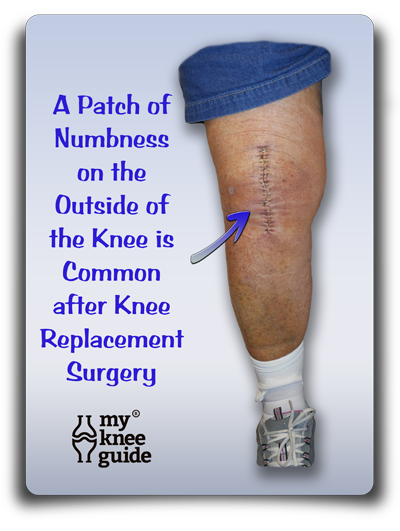

After knee replacement surgeryknee replacement surgery many patients experience a feeling of numbness on the outside portion of the knee. This is common and will not have any detrimental effect on the knee replacement. This occurs because of the location of the incisionincision for surgery and the path of the nerves in the skin.

Specifically, the infrapatellar branch of the saphenous nerve travels from the inside (medial) aspect of the knee, then crosses the mid-line to the outside (lateral) portion of the knee. The incision for a total knee replacement is typically in the middle of the front of the knee and disrupts the branches of this nerve that are innervating the outside portion of the knee. This will usually leave an area that has diminished sensation. Most patients notice this when they kneel down or when their cloths rub up against the knee. Frequently, as healing occurs, some or all of this loss of sensation will improve.
However, there are other types of numbness that a patient may feel that are not specifically a consequence of the incision for knee replacement surgery. Some examples include a radiating numbness down the leg from sciatica or diffuse numbness of the feet from peripheral neuropathy (typically associated with diabetes). Certain complications from a peripheral nerve blockperipheral nerve block can cause numbness or burning down the leg. These types of numbness should be evaluated by a physician to determine the cause and decide if treatment is necessary.














